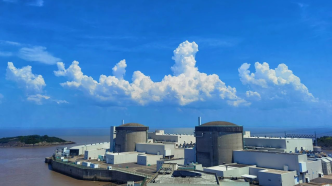
At 21:18 on May 1, after 21 days of hard work, the Qinshan Nuclear Power Plant's online irradiation production of medical isotopes device, which is controlled by China National Nuclear Corporation's China Nuclear Power Investment, successfully completed the system identification and power supply test, marking that the device has been fully completed as planned. So far, my country has mastered the key technology of batch online irradiation production of isotopes. Lutetium-177, strontium-89, yttrium-90 and other short-half-life medical isotopes that are currently in short supply in China will enter the large-scale production stage after the supporting factory building is completed and put into production in the second half of this year.
The irradiation device is another large-scale production platform for medical isotopes built by Qinshan Nuclear Power during the 14th Five-Year Plan period based on the heavy water reactor, following the carbon-14 irradiation production project. "In the past, when we produced cobalt-60 and carbon-14, we had to wait until the unit was shut down for maintenance for about two years before taking them out. After this device is put into use, it can produce short-half-life medical isotopes such as lutetium-177, strontium-89 and yttrium-90 without shutting down the reactor, and the production capacity can fully meet domestic demand." According to Qinshan Nuclear Power, the platform has the ability to load and unload target boxes online during the normal operation of the heavy water reactor unit, breaking the long-term dependence on imports for my country's main reactor-irradiated medical isotopes.
The irradiation device is the first commercial reactor online batch irradiation isotope production device in my country. It has the characteristics of high positioning accuracy, reliable transmission, full shielding, and high production output. It was independently developed by Qinshan Nuclear Power in cooperation with Shanghai Nuclear Engineering Research and Design Institute Co., Ltd., China National Nuclear Corporation Northern Nuclear Fuel Element Co., Ltd., Suzhou Jiangjin Automation Technology Co., Ltd., China National Nuclear Baoti Zirconium Co., Ltd., Xi'an Jiaotong University and other well-known domestic enterprises and universities over a period of three years. In order to ensure the safety and reliability of the device, on the basis of theoretical calculation and demonstration, the project team has successively developed principle prototypes and engineering prototypes, conducted more than 2,200 tests, and answered 115 safety review questions. In order to ensure the achievement of project goals, the participating research units have solved a series of difficulties such as the highly integrated design and layout of the fully automated irradiation device in a small space, the welding of ultra-long and ultra-thick zirconium alloy components, the deep well underwater high-precision installation under high radiation conditions, and the safety analysis of complex core conditions. Before implementation, systematic planning and careful material preparation were carried out, and personnel running-in drills and procedure verification were completed in advance, ultimately ensuring the efficient and smooth implementation of the installation work.